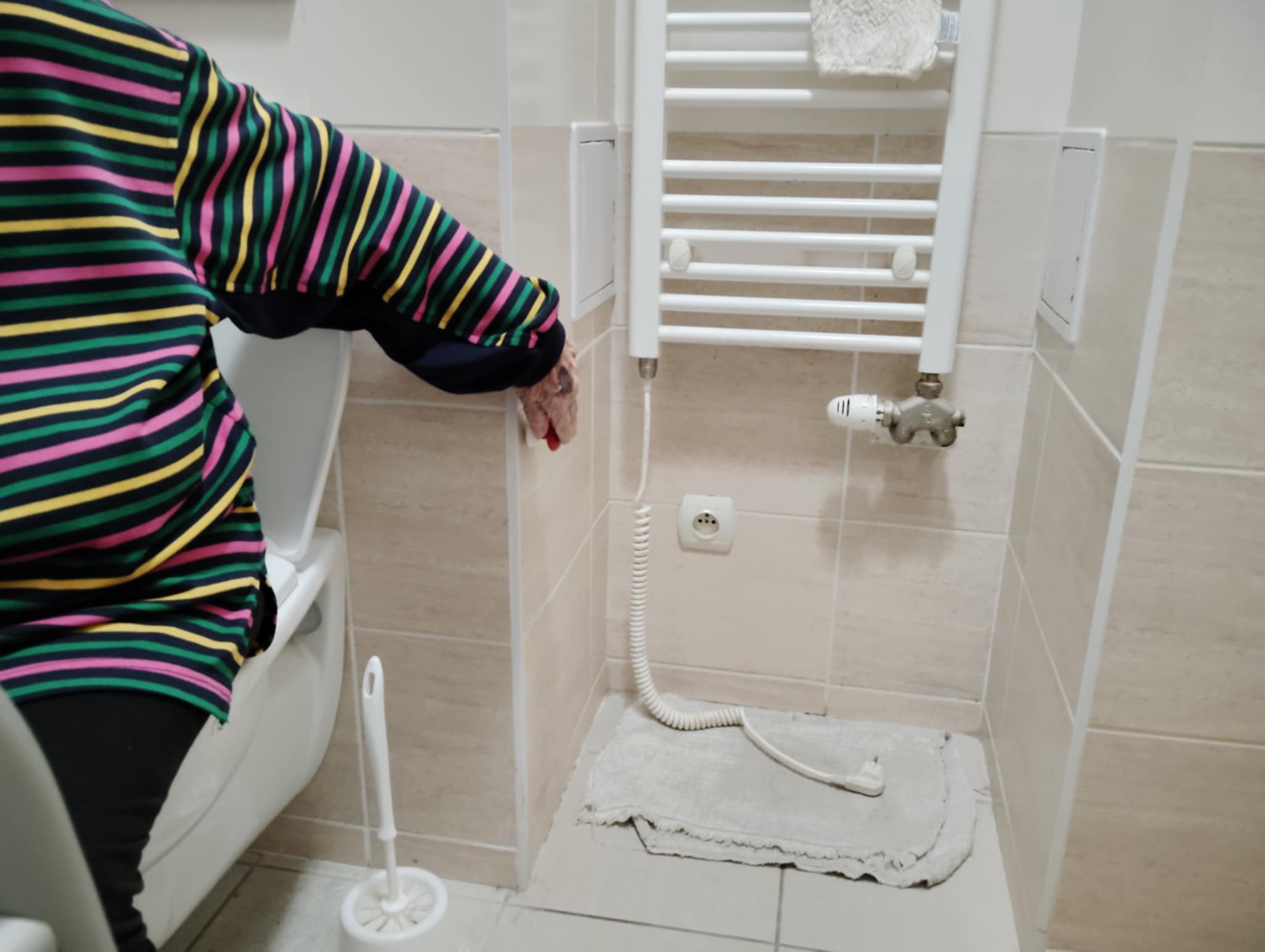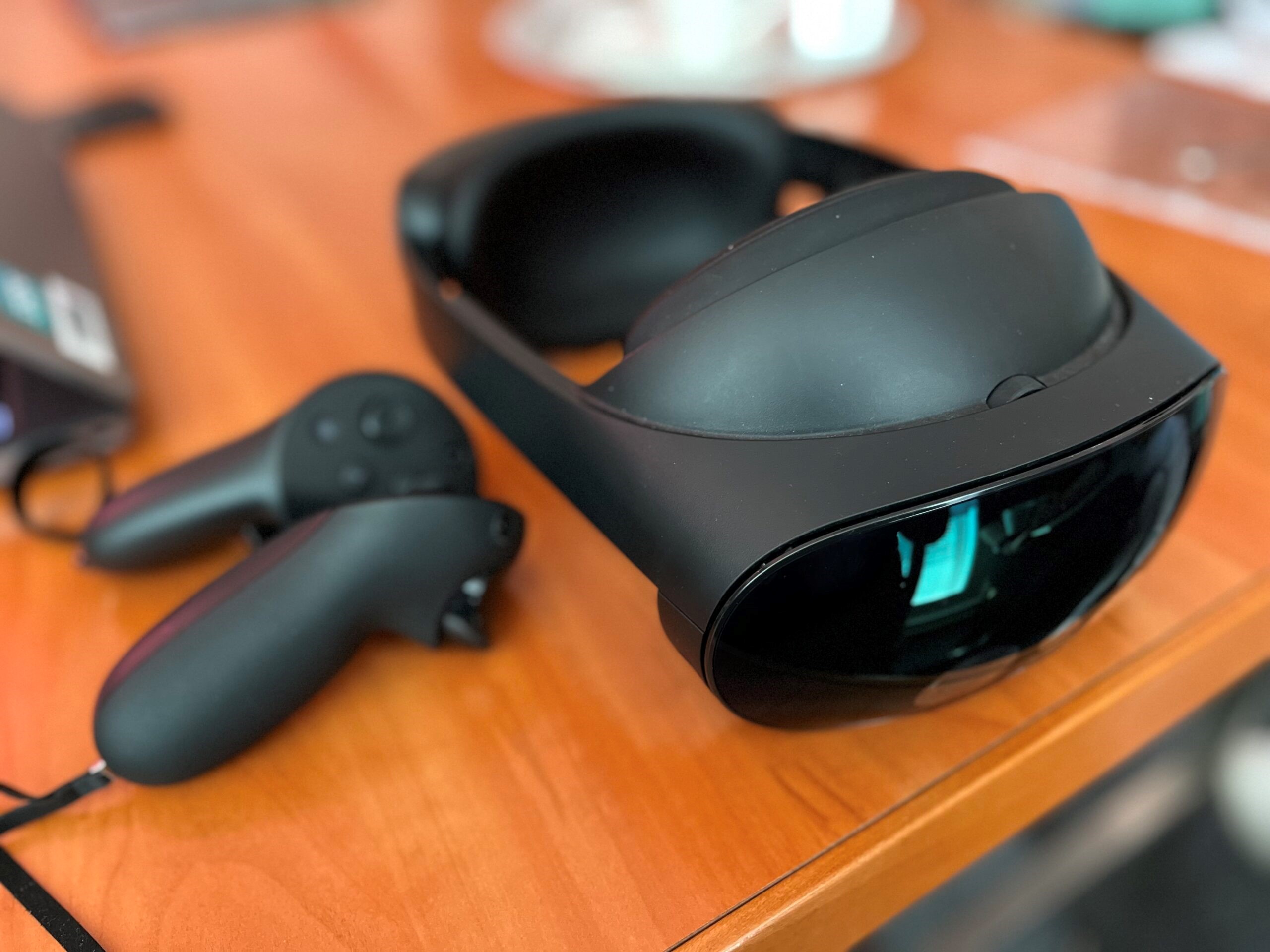DigiCare4CE two Pilot Actions in Slovakia (Via Carpatia EGTC project partner)
Via Carpatia EGTC pilots
PA1 Solution – Virtual Reality (VR) in the Facility Via Lux
- Solution Implemented: As part of the VR implementation, we utilized specially developed software and a VR headset to support senior therapy. The application offers interactive experiences that enhance cognitive functions, memory, motor skills, and relaxation. Users can choose between training or relaxation programs in environments such as forests, beaches, or underwater worlds. Control is intuitive, using controllers or head movements. The VR headset provides a realistic visual experience in high resolution, complemented by 3D sound, making therapeutic sessions more effective.
- Location and Purpose: The VR solution was implemented in the social services and senior care facility Via Lux in Košice. The aim was to improve mental health, offer a new form of stimulation and relaxation, and facilitate the staff's work in creating activities for seniors.
- Decision-Making Process: The decision to implement the virtual reality (VR) solution was based on the need to improve the emotional and cognitive health of seniors and to provide them with innovative ways of stimulation and relaxation. After thoroughly examining available VR technologies, we selected a solution specifically tailored to the needs of older adults. The main reasons for implementation were the technology's ability to support memory, motor skills, and orientation through interactive training programs, as well as the provision of relaxing experiences in immersive environments.
- Implementation Steps: After selecting the VR platform, we worked with the technology provider to set up the VR system and train the staff to use it effectively. The implementation included pilot sessions with the residents to gauge their responses and adjust the experience based on their feedback.
- Impact on Care Process and Organization: The VR solution had a positive impact on residents' engagement, reducing feelings of isolation and providing mental stimulation. While the staff had to adapt to integrating VR into daily activities, the overall care process was enriched, providing an additional tool for therapeutic support.
- Pilot Duration and Participants: The pilot lasted for approximately 6 months. It involved residents of the care facility, with a focus on those who could benefit most from mental stimulation and relaxation activities.
- Feedback and Future Plans: The feedback from the residents and staff was positive, with many residents enjoying the immersive experiences. The solution will likely be kept, with potential adjustments based on ongoing feedback to improve the content and user experience.

PA2 Solution – Monitoring System and SOS Buttons with Mobile App (Implemented at Arcus Facility)
- Solution Implemented: We implemented a monitoring system with motion sensors and SOS buttons, connected to a mobile application. The motion sensors track client activity in real-time and send alerts to the staff via the app when a senior gets out of bed during nighttime hours. The SOS buttons are securely installed in bathrooms and toilets, where risky situations are most likely to occur. Pressing a button sends a signal to the system, notifying the staff. The mobile application processes data from the devices in real-time, providing notifications, activity visualization, and event history, enabling the staff to respond quickly and accurately. This system enhances client safety, improves care efficiency, and reduces staff workload, especially during night shifts.
- Location and Purpose: The solution was implemented in the Specialized Facility and Senior Care Facility Arcus. The goal was to enhance the ability of caregivers to monitor residents’ safety and respond promptly to emergencies or distress signals.
- Decision-making process: The decision to implement this solution was based on the need for improved monitoring and faster emergency response. We evaluated several available monitoring technologies and selected the solution that best met the facility's requirements.
- Implementation Steps: We set up the devices, connected them to the mobile app, and trained the caregivers and staff on how to use the system effectively. Pilot testing was conducted with selected residents to assess the performance and reliability of the monitoring system.
- Impact on Care Process and Organization: The implementation significantly improved the care process by providing real-time data and alerts, allowing for a faster response to any emergencies. The organization also benefited from increased security and a reduction in potential accidents or delays in providing assistance.
- Pilot Duration and Participants: This pilot also lasted for about 3 months. It included residents who were more prone to health risks or needed more frequent monitoring.
- Feedback and Future Plans: The feedback was largely positive, with both residents and caregivers appreciating the added security and ease of use. The system will be retained, with potential upgrades or integration of additional features based on the needs identified during the pilot.

In both pilots, we aimed to integrate digital solutions that would support and enhance the quality of care provided to elderly residents, ensuring that technology serves as an effective tool to address their specific needs.